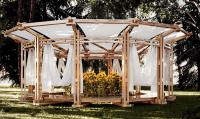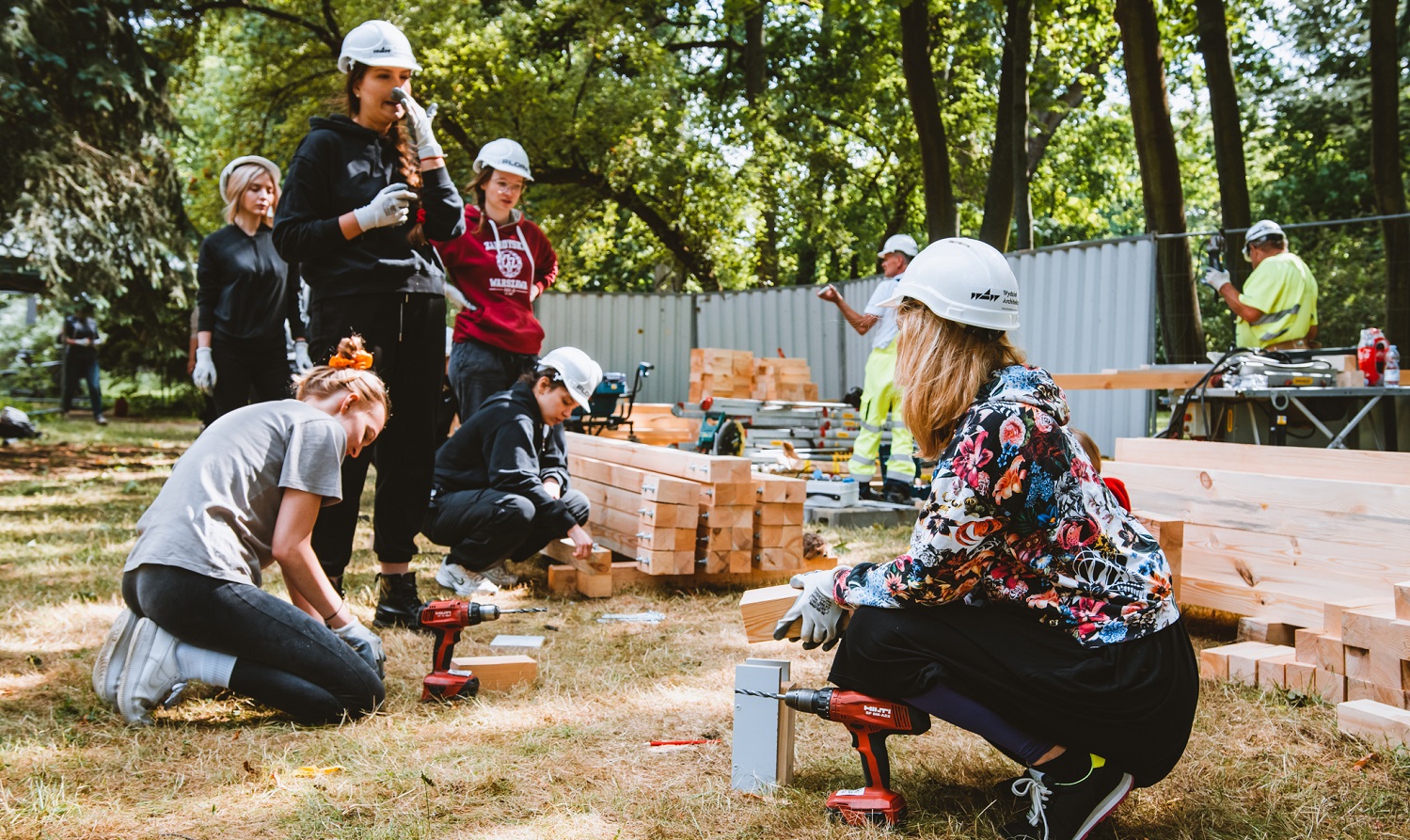Erecting it. The Freedom Pavilion in the Royal Łazienki Park

The Freedom Pavilion was built in the Royal Łazienki Park, near the Hermitage, photo: IG / stawiamy_
A new building was erected in the Royal Łazienki Park - it is the Freedom Pavilion. It was built by students and lecturers from the Faculty of Architecture of the Warsaw University of Technology, but the project itself brought together many communities and institutions.
The Freedom Pavilion is part of the 'erecting it' project, whose main initiator and originator is Professor Anna Wierzbicka of the Faculty of Architecture. She has involved master's students from the A3 specialisation - Architecture of Technology and Structure, Context and Meaning.
– We are building answers to contemporary problems together. This year we are leaning into the theme of Ukrainian freedom and world peace. We want to manifest it and spread it through the form we create – emphasises Kamila Chodola from the design team.
For several weeks, students divided into ten sub-teams worked intensively to research, sketch and prototype ideas. Each group was committed to developing their own architectural concept, looking for unique solutions and answers to the problem at hand.
– Then we joined forces and put our ideas together into one coherent whole – says Kamila Chodola. – Now that our idea materialized into a real object, we feel that the energy of our group is truly unstoppable – she adds. Experienced specialists - architects, urban planners and constructors - helped in the subsequent design stages.
The structure was built in the Royal Łazienki Park in Warsaw. - Walking along Agrykola, near the bridge with the statue of Jan III Sobieski, you will reach the Hermitage - a white, small building. It is there, in close proximity to this building, that our Freedom Pavilion was erected – Kamila Chodoła explains.
The pavilion built by the students is in the shape of a circle, which, due to its finite nature, represents perfection and unity. - Unity in the context of the war in Ukraine becomes a symbol of security. It is also a demonstration of solidarity," notes Kamila Chodola. Due to the ease of processing, as well as the ecological aspect, the construction is made of wood.
The opening of the Freedom Pavilion took place on 1 July. The event was followed by an inaugural lecture in the Royal Theatre in the Old Orangery, entitled "Balancing architectural works and social contributions" given by special guest Japanese architect Shigeru Ban. The pavilion will be available until the end of September.
It is already clear that the 'erecting it' project will be cyclical. – The project itself, as well as its implementation, has brought together many communities and institutions. Indeed, the pavilion is an integral part of the 'Architecture of Challenges - Rebuilding Ukraine' conference. Lectures and scientific discussions were devoted to architectural and construction solutions in times of crisis caused by war – said Ewelina Gawell, PhD. The conference, organised by the Faculty of Architecture at the Warsaw University of Technology, the Royal Łazienki Museum and the National Heritage Institute, took place on 3-4 July in Warsaw.
For more information about the Freedom Pavilion and the team creating it, please visit the project's Instagram and Facebook.









